Operation coverup
This week: A Pecan, is a Pecan, is a Pecan – NOT; Biting the bullet (or nut); Operation coverup; Out of sight but very much in mind; []; Looking back;
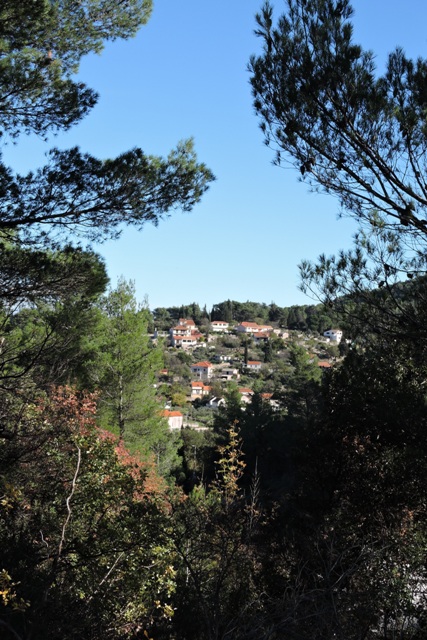
It’s been another wet week!
This has severely limited what I can do outside. Whilst I still have a good supply of substantial waterproofs, the idea of dressing up appropriately, just to do work, is no longer attractive.
I have been able to
A Pecan, is a Pecan, is a Pecan – NOT
I regard Sundays as the first day of the week. Regular readers will recall that here in Dol Sundays are ‘quiet days’. It is a concept I am extremely comfortable with.
This week it was another wet day.
We have had a run of wet and miserable Sundays of late. So with the wood stove providing the hot water for the central heating, I decided to do some serious online research.
I knew that Pecans are a North American nut so I was surprised last week to find some trees being offered by a garden centre in Zagreb.
Zagreb is 400+ kilometres to the north, where winters are long, cold and inhospitable. So finding them on offer was a surprise.
Locals here on the island are “conservative”, growing grapes and olives, potatoes and winter greens, herbs and summer salad crops but little else. This is much as local people have done for centuries.
When I had coffee with neighbours and asked them about Pecan nuts, they had never seen nor tasted them. I resorted to the internet to show a photograph of what they look like.
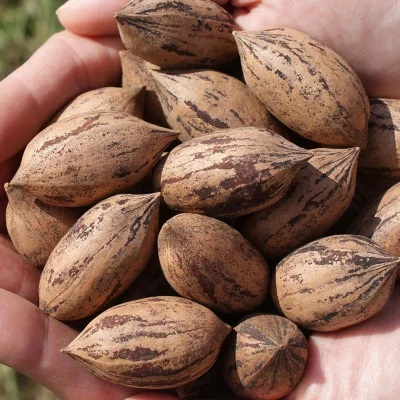
So with this in mind I started to look at what the ideal growing conditions are for Pecan trees, Carya illinoinensis.
They originate in the southern United States and northern Mexico despite their Illinois name. So there are a wide variety of climate zones where they grow, but all have long, warm and sunny summers.
This research turned out to be another of those internet worm holes, where I learned a lot and discovered that the climate of Dol is compatable with several of the twenty plus main varieties.
Each Pecan variety is different, in the colour, size and flavour of the nuts, when they flower, whether they can self pollinate and the climate they like. And I thought all Pecans were the same….
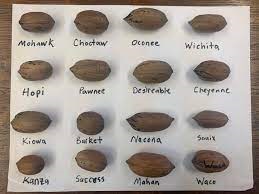
Biting the bullet (or nut)
I found several US University agricultural extension websites with vast amounts of information on growing Pecan trees commercially. This is not what I had in mind.
Neither is it my intention to have a specimen tree. They can grow to 40 meters or more tall. But I chanced on a website where you can enter your growing zone (Dol is 9/9A, Kopen: CSB) and it will indicate suitable varieties.
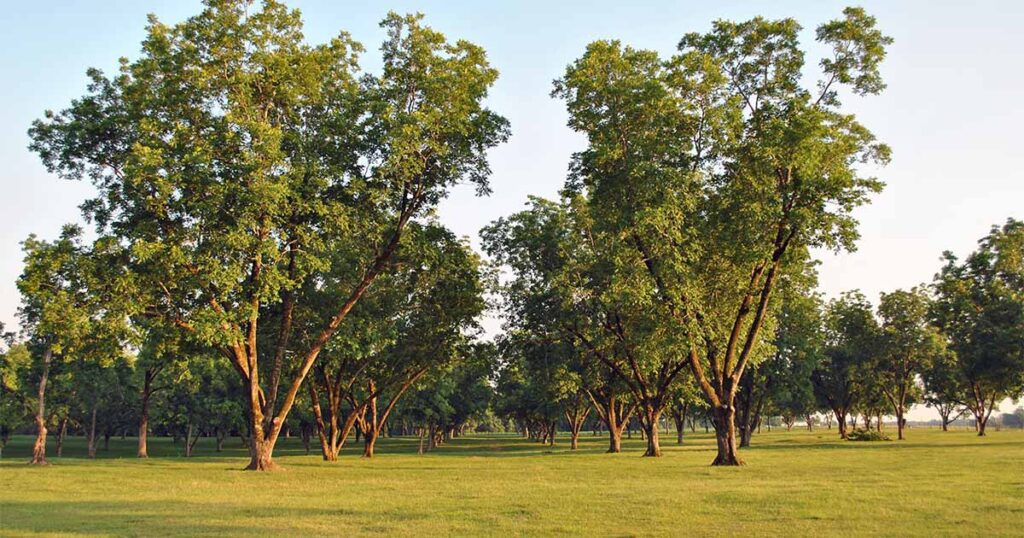
All my detailed work on the climate around Dol and the various micro climates I have in different orchards helped me to clearly identify some varieties that appear ideally suited to my Top Orchard.
Of perhaps five possible varieties, one is called Cape Fear and a second named Wichita.
By chance they are amongst the varieties in Zagreb and with just two trees of each named variety left in stock, I bit the bullet and ordered one of each.
They stated that all were suitable for “Coastal Croatia”. Well they would say that, wouldn’t they! But it led to an interesting and enjoyable morning when the weather was not fit for anything else.
So with that decision made, I ordered a couple of Pecan trees, a Banana and a Mango tree.
It is more of my experimental horticulture, but it is also allied to the changing climate we are experiencing and future proofing my orchard plantings.
An Australian ‘back yard’ gardener’s blog pointed me to a video from a Nurseryman in the central valley of California, all about “One hole planting”.
I am very aware that if you plant trees close together, around 30 cm apart, their close proximity will prevent exponential growth.
This in essence is the “Cordon” system of planting, long practiced in the UK, which I have brought here to my Drupe orchard.
With a break in the weather one lunch time, I had a wander down into the Top Orchard.
Towards the bottom is an ancient Olive tree. At least the roots and trunk is ancient.
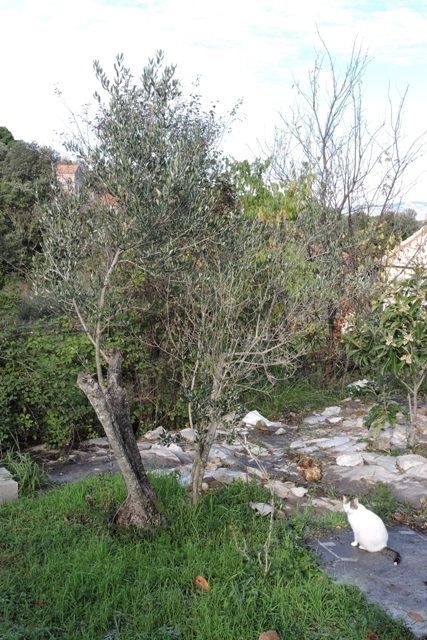
Since I moved here it has never had a flower or a single fruit.
My expert neighbour has pruned it, but to no avail. It is the remains of a much larger tree, evidenced by the bowl of the tree still in the ground.
I suspect that this orchard once had a lot more olives, but this was the only one left when I moved here. There were a few very dead tree stumps where others had once been.
I have planted two table olives and had resolved to try once more next year to encourage it to fruit, otherwise I would remove it.
Seeing as I now need space for a couple of new trees, I am going to take it out. I will also plant another variety of table olive, so one unproductive tree will be replaced by three.
I don’t ever like digging trees out, but it is rather moth-eaten and because of poor management over many years, is now no longer productive.
All the saplings were all delivered on Thursday morning. The only thing I have to do now is dig out the Olive tree…
Operation coverup
It has taken me a day and a half this week, but I’m happy to say that all the citrus trees now have their winter protection on.
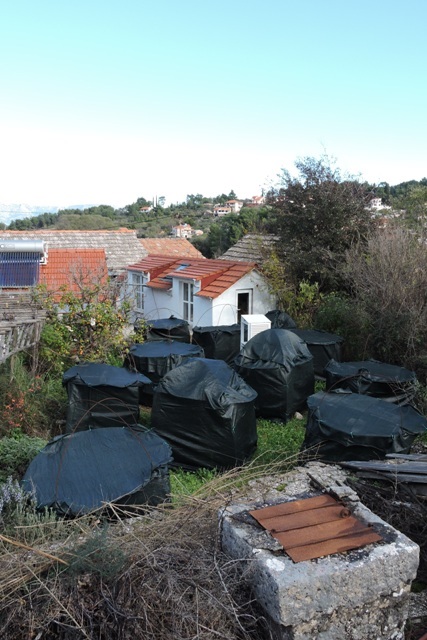
This is a citrus growing area, not in vast orchards, but rather in and around peoples homes.
Apart from my orchard with twelve trees, each of a different Citrus variety, there is another small orchard owned by a neighbour nearby. However groups of citrus are the exception.
Around the village you do see citrus which are mainly orange trees. Orange are more hardy than lemons and limes, but generally Citrus are just solitary specimens in field margins.
Lemons tend to be grown in courtyards or around people’s homes, where they can be protected with shade netting each mid-winter.
After the disastrous cold spell between the 4th and the 12th January 2017 when the freezing temperatures killed ten of my citrus saplings, I developed a frame system to protect them.
This is made of 8mm steel building rebar, driven half a metre into the orchard, at an angle to create a permanent circular frame.
Around the end of November I hang a mesh curtain around the frame to stop chilling winds, then in early December I add a top section to completely enclose each of the trees.
This year I am late, because of the heavy rain we have had throughout November. So I have hung both the side curtains and the top cover at the same time. Hence it has taken me longer than usual.
For the first time this year, I have also had two trees which have now grown sufficiently that they need a cover over the top of the oval hoops.
Citrus trees are slow growing. The frames are two meters tall, and I will prune the trees so that they remain inside the steel frames.
This will keep them to a manageable size for picking the fruit and also allow the protective curtain to be easily hung each year.
The complete unknown is what the current climate breakdown will do to winter weather here.
Dol is kept warm because of the effect of the Adriatic sea. However when we get a winter wind anywhere from NNW to ESE, it is always cold.
This is because the air mass will have crossed the cold inland areas of eastern Europe before reaching the island.
Climate change means some places will be warmer (at certain times of the year), some dryer, some wetter and some colder.
I wasn’t alone in losing my citrus in 2017. Everyone roundabout also lost their trees, but my protection system has already helped my trees improve the quality and quantity of fruit.
So with a chance of some cold winds next week, and of course the last week of December and the first week of January are always the coldest weeks of the year, I am ready.
Out of sight but very much in mind
Future proofing my buildings has been a key theme in every bit of my restoration work.
Whether that is making sure that the insulation is of the right quality and thickness, running wires in conduit so in the future, as and when new technology comes along, old technology can be replaced, or piping central heating to every room, even though I many not install radiators.
Every job has been carried out with the future in mind.
It is about thinking of the present technology and trying to imagine what I or someone else in the future might want. Even with what technology is available today.
If find a nice recipe on my Tablet using WiFi and want to check the BIG refrigerator in the Cottage to see what I have or need, I should be able to do so.
Then I want to check to see what is on offer at the local supermarkets. In other parts of the world a supermarket would then deliver to the door following an online order.
We are some way off all of that scenario here on the island, but IT WILL come eventually.
In my Dol house, the ethernet cables will be in place, together with a power grid, so when the time comes, it will all work…
When wiring your home for the future, there are a number of current systems that will control various functions across your property. These include:
➤ Audio, video and entertainment
➤ Access, security and smart doorbells
➤ IOT – Internet/intranet of things
➤ Heating and cooling sensors and automated environmental control switching
➤ Computer networking and the Internet
➤ Communication with the outside world
➤ Networked smoke detection
➤ Outdoor systems e.g. automatic irrigation
➤ Weather monitoring systems
➤ Green energy generation
and of course the power supply and network access where all these things can be plugged in.
All these systems must be connected to a central location in the house.
Mostly by CAT6 ethernet cables laid into the walls as I have done the restoration work.
I have a new full size network cabinet ready to be installed, where they will all terminate. This is because I have outgrown the Fibre Optic cabinet which came with me from Abu Dhabi.
There was just a lone antiquated telephone socket when I bought my Dol house.
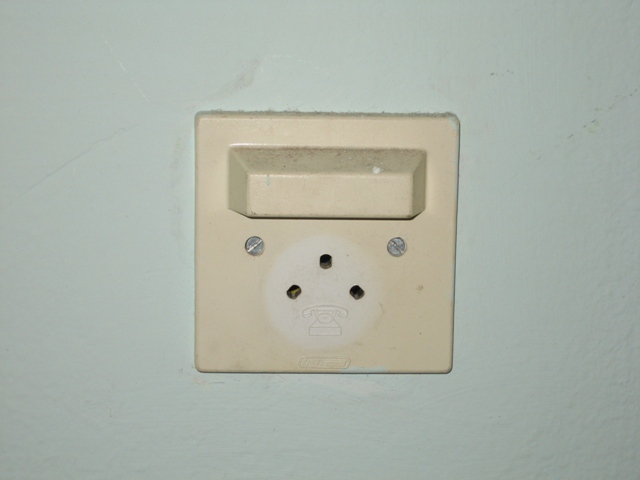
But there is also working with what is already in place.
Almost the very first job I completed was the installation of a modern Consumer Unit when the incoming power meets the electrical protection and internal network.
This was because the one in place could have been designed by Richard Arkwright, 1732 – 1792 (except he predates Thomas Edison’s invention by 90 years).
I do Arkwright a disservice. He would have designed and constructed something which was much neater!

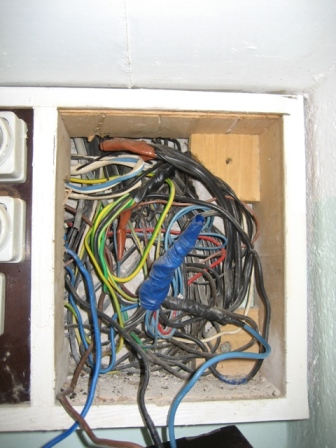
With wiring safety a priority and without new buildings, the new Consumer Unit went where the old one was, because that is where the electric meter and power feed are.
But now I have a dedicated mechanical plant room and a new meter cabinet, I need to again think where to run a link between the Plant Room and the current consumer unit.

This week I have cut a channel in the outside stone wall, large enough to take a substantial plastic conduit.
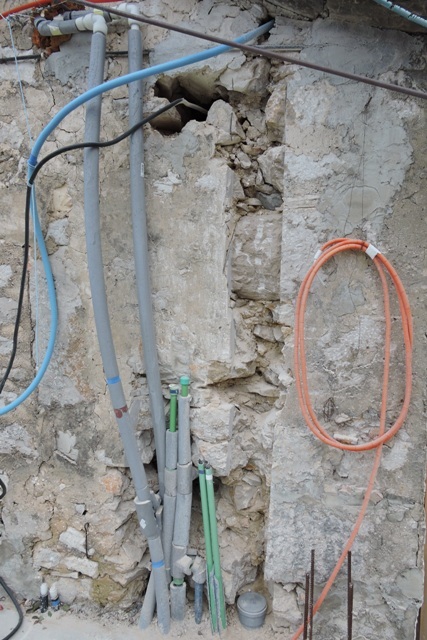
I have a 40 amp mains cable which will link the two locations together, but to get the cottage and the Konoba electrics operational, I need to link the new consumer unit in the Plant Room, to the current incoming power supply.
Cutting stone walls is not one of my favourite jobs because of the mess and the differing stones.
Sandstone is easy to cut and channel, limestone a little harder and granite chunks would benefit from a few Hatton Round explosive charges.
Lacking any shaped C4 explosive charges, I cut two parallel vertical slits in the stone up the wall and then broke away the stone in-between with an electric breaking hammer.
I am left with a reasonably neat void where the plastic pipe will go. I’m going to have to visit Volat though to get some of the plastic components that I’m going to need.
But then I always need something to talk about next week… NCG
Looking back – Week 49
This is the start of the weekly section, with links to past issues of the blog.
2014/49 heading
2015/49 heading
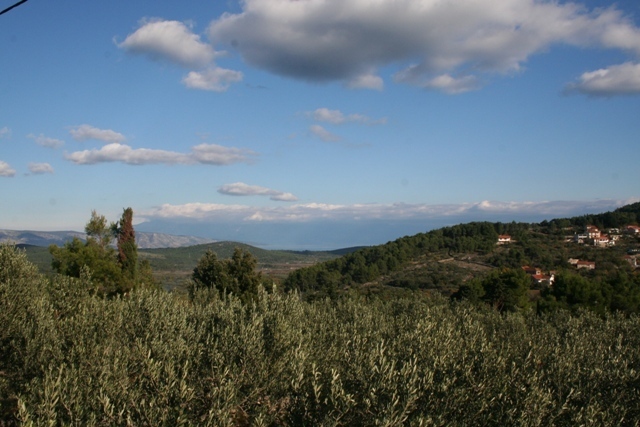
2016/49 How do you eat an elephant
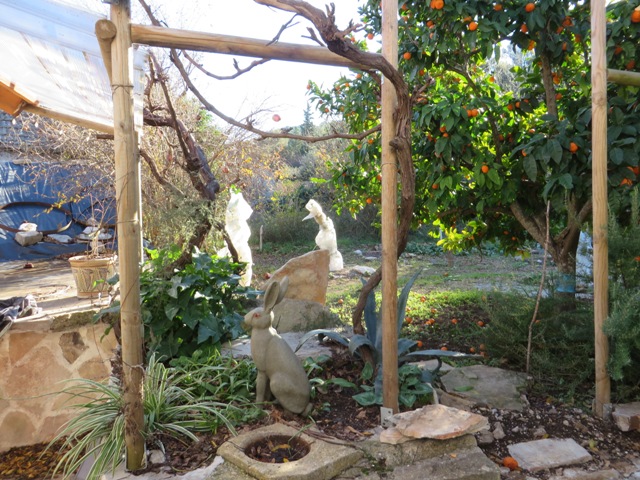
2017/49 I’ve started so I’ll Finish
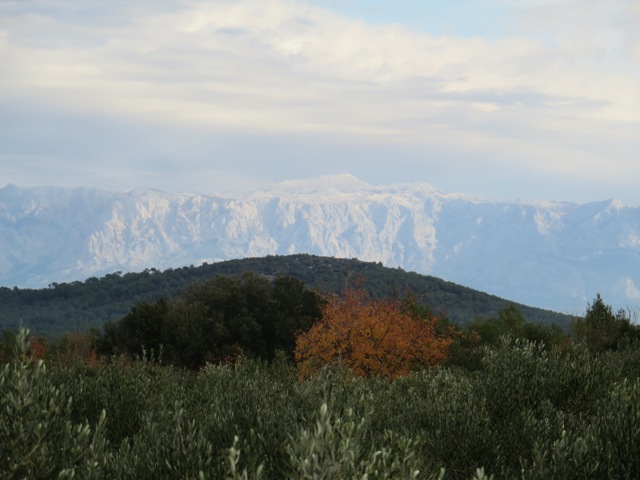
2018/49 Well clarted boots
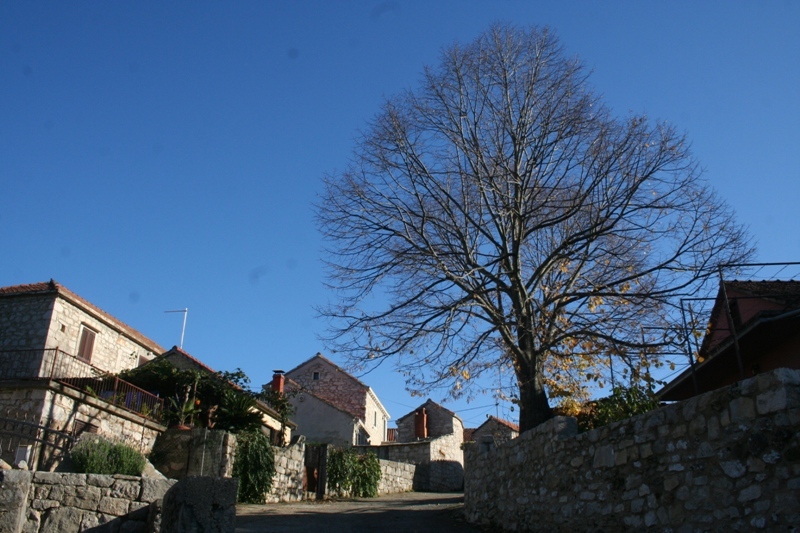
2019/49 Digging for Brown Gold
2020/49 Many uses for a blue light